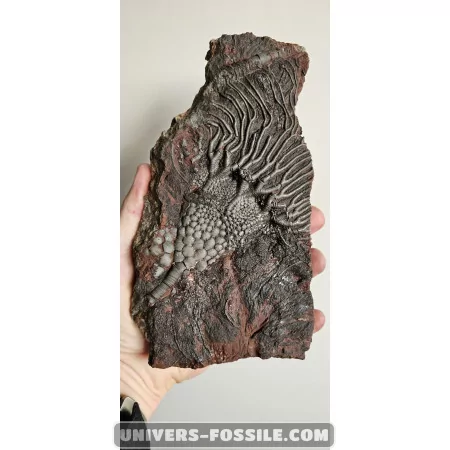Crinoid: A Fascinating Look into the Evolutionary History of Crinoids

Crinoid - Fossil Crinoids
Structure and Appearance: Fossil crinoids come in various forms, but many have a plant-like appearance. They consist of a calcareous stem or "column" attached to the seafloor, from which radiate branched arms. These arms were used to capture food particles from the water.
Size: Fossil crinoids could vary greatly in size, ranging from a few centimeters to several meters in length for some species.
Location: Crinoids were abundant in ancient seas, primarily inhabiting shallow waters. Their fossilized remains are often found in sedimentary rocks formed from marine deposits.
Composition: The most commonly fossilized parts of crinoids are their calcareous ossicles, which formed the stem and arms. These structures are often well-preserved in fossiliferous rocks.
Lifestyle: Crinoids were typically sessile organisms, attached to the seafloor by their column. Some were mobile during their juvenile stage, but many adult crinoids remained fixed in one spot throughout their lives.
Evolution: Crinoids have a long evolutionary history...
Crinoid: A Glimpse into the Prehistoric Wonders of Crinoids
Crinoids, commonly known as sea lilies, are mesmerizing marine creatures with an evolutionary history dating back over 500 million years. These fascinating organisms have captivated the imagination of scientists and naturalists for centuries, offering valuable insights into the ancient seas that once covered our planet.
While crinoids underwent many changes over time, some basic features of their anatomy remained relatively unchanged. These enduring characteristics have allowed paleontologists to trace their evolution through geological ages, unraveling the mysteries of their development and adaptation over millennia.
The intricate beauty of crinoids is not just limited to their appearance but extends to their biological significance in understanding the processes of evolution and environmental changes that have shaped life on Earth. By studying these ancient creatures, scientists gain valuable insights into the complexities of life in prehistoric oceans and the interconnectedness of species across geological time frames.
Delve into the enchanting world of crinoids and discover the secrets hidden within their graceful forms. Explore their evolutionary journey and marvel at the resilience and adaptability of these remarkable organisms that have stood the test of time. Unearth the wonders of the past through the lens of crinoids and immerse yourself in a bygone era filled with mystery, beauty, and natural splendor.
